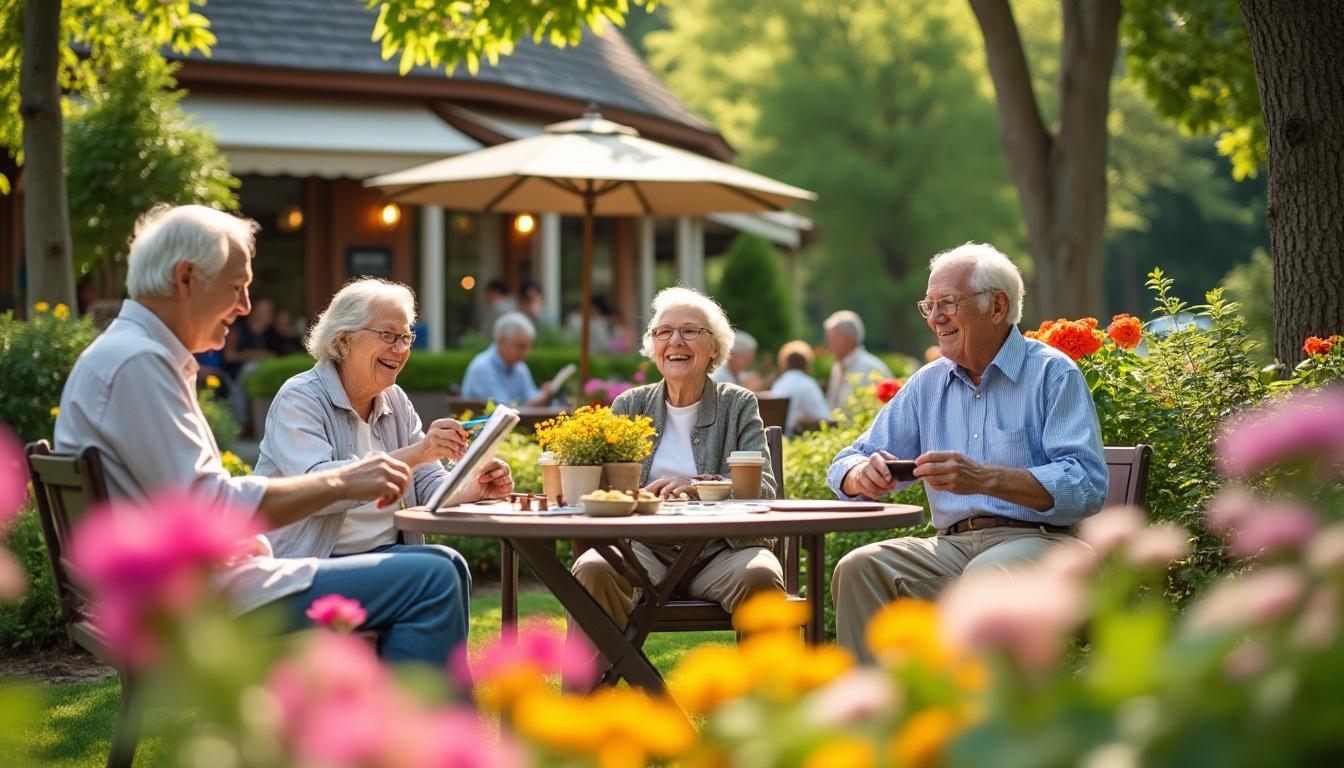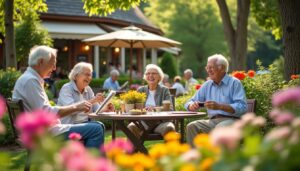Welcome to a universe where every click tells a story. Every piece of data you share helps shape your online experience. Together, we create a more secure and personalized space.
By using cookies and other data, we are able to maintain and optimize our services. This allows us to detect outages and protect our platform from spam, fraud, and abuse. We also analyze audience engagement and site statistics to better understand the use of our services and improve their quality. According to your preferences, we adjust the content and advertisements displayed for a tailored experience.

Optimistic retirees: a pillar of the silver economy
In a world where the population is aging rapidly, optimistic retirees play a crucial role in the dynamics of the silver economy. Contrary to traditional stereotypes, these active and engaged seniors are essential players who contribute significantly to economic growth and innovation. But how does this positive attitude of retirees actually influence the longevity economy?
Why is the silver economy a major opportunity?
The silver economy refers to all economic activities related to older individuals. With increasing life expectancy and retirement age rising, this segment of the population now represents an ever-growing share of consumers and workers. Understanding this demographic transition is essential to grasp the challenges and opportunities it presents. To learn more, see this article on demographic transition.
How do optimistic retirees stimulate consumption?
Optimistic retirees have significant purchasing power, often bolstered by long-standing savings and prudent financial management. They spend in various sectors such as healthcare, tourism, housing, and leisure, thereby energizing the local economy. Additionally, their preference for quality products and services drives businesses to innovate and improve their offerings, creating a virtuous cycle of growth and quality.
What strategic investments do retirees favor?
Optimistic retirees actively invest in diverse fields, contributing to the silver economy. Whether through real estate investments, financial placements, or support for startups, their financial participation is an important lever for economic development. According to this article, unlocking the silver dividend involves strategic investments that support innovation and entrepreneurship.
How do retirees contribute to social innovation?
Optimistic retirees bring a wealth of experience and wisdom that can be leveraged in social innovation. Their involvement in volunteer activities, community advisory boards, or mentoring contributes to social cohesion and general well-being. By expanding perspectives for the well-being of older individuals, they actively participate in creating innovative solutions for contemporary social challenges. For more in-depth knowledge, see this article.
What policies can enhance retirees’ engagement?
Governments play a key role in promoting the silver economy by establishing policies favorable to retirees’ engagement. For instance, the Minister of Hong Kong has mentioned the possibility of dropping the proposed tax relief on the MPF for seniors, a decision likely to encourage greater economic participation among older adults. For more details, see this article.
What are the economic benefits of retirees’ engagement?
The active engagement of retirees in the economy brings numerous benefits. It stimulates demand, creates jobs, and fosters innovation. Furthermore, retirees participating in the labor market or entrepreneurial activities extend the duration of their economic contribution, which can alleviate pressures on pension systems and social services. Additionally, their involvement in community projects and local initiatives strengthens the social and economic fabric of regions.
How is Rwanda transforming aging into an economic opportunity?
Rwanda is an inspiring example of a country that has managed to turn its aging population into an economic opportunity. By investing in suitable infrastructure and encouraging entrepreneurial initiatives among retirees, Rwanda demonstrates how a proactive approach can maximize the benefits of the silver economy. To discover how Rwanda achieves this, read this article.
What challenges must be overcome for a prosperous silver economy?
Despite the many advantages, the silver economy faces several challenges. Among them is the need to adapt infrastructure, train businesses to meet the specific needs of older adults, and ensure access to quality healthcare. Additionally, it is crucial to combat stereotypes related to aging and promote a positive image of retirees. The development of inclusive strategies and the ongoing support of public policies are essential to overcome these obstacles.
How do technologies facilitate the integration of retirees into the silver economy?
Technologies play a crucial role in integrating retirees into the silver economy. Digital solutions enable seniors to stay connected, manage their finances, and even work remotely. Moreover, innovations in health, such as telemedicine devices and wellness applications, enhance the quality of life for retirees and their autonomy. The adoption of these technologies is essential to maximize their economic and social participation.
What future for the silver economy?
The future of the silver economy looks promising thanks to the growing engagement of optimistic retirees. By fostering an inclusive society and valuing the contributions of seniors, it is possible to create a dynamic and resilient economy. Current trends show that more and more countries recognize the importance of this segment of the population and are implementing initiatives to take advantage of it. The key is to continue encouraging this positive and proactive attitude among retirees to build a future where the golden age truly becomes a period of wealth and prosperity.








